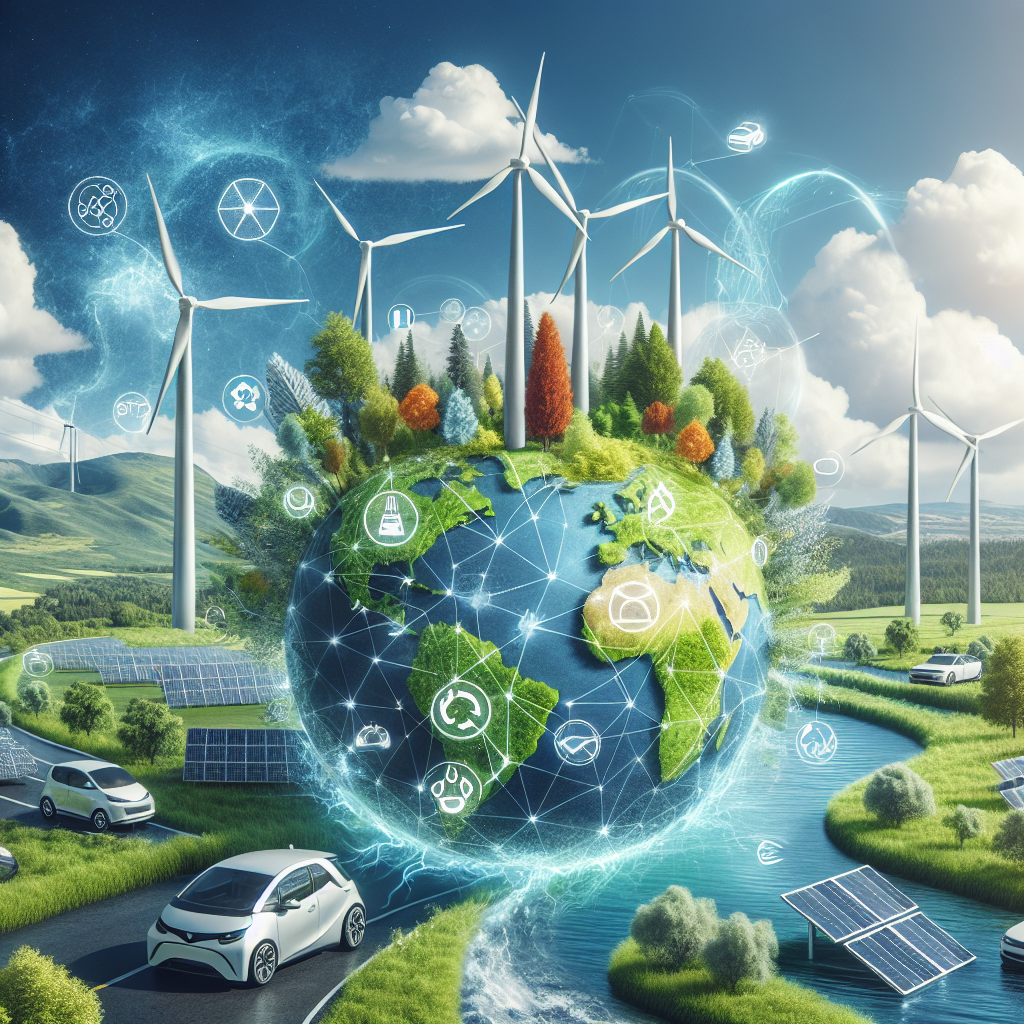The Role of Technology in Minimizing Carbon Footprints
In the face of escalating climate change concerns, reducing carbon footprints has become a global imperative. The role of technology in this endeavor is both transformative and expansive, spanning various sectors from energy production to transportation, and beyond. Innovative technological solutions are not just assisting in mitigating the effects of climate change but are also paving the way for a sustainable future. This article delves into how technology is being harnessed to minimize carbon footprints and the impact of these advancements.
Energy Sector Transformation
One of the most significant ways technology is reducing carbon footprints is through the transformation of the energy sector. Renewable energy technologies, such as solar panels, wind turbines, and hydroelectric power, are replacing fossil fuels, thereby slashing carbon emissions. Smart grids and energy storage technologies are enhancing the efficiency and reliability of renewable energy, making it more feasible as a primary energy source.
Advancements in Transportation
The transportation sector is a major contributor to global carbon emissions. However, technology is making strides in developing sustainable solutions. Electric vehicles (EVs), powered by clean electricity, are becoming increasingly popular, significantly reducing the carbon footprint associated with personal transportation. Moreover, advancements in battery technology are improving the range and charging speed of EVs, making them more practical for everyday use.
Public transportation is also seeing the benefits of technology. Electric and hydrogen buses are beginning to replace diesel-powered buses, and advancements in railway systems are making electric trains more efficient. These developments not only reduce carbon emissions but also improve air quality in urban areas.
Smart Buildings and Cities
Technology is playing a crucial role in making buildings and cities more energy-efficient. Smart building technology, incorporating sensors and IoT (Internet of Things) devices, can optimize energy use, reduce waste, and significantly lower the carbon footprint of buildings. Similarly, smart city initiatives are integrating technology to improve public transportation, reduce traffic congestion, and increase energy efficiency, contributing to a substantial reduction in carbon emissions.
Carbon Capture and Storage
Carbon capture and storage (CCS) technology offers a promising solution for reducing carbon emissions from industrial processes and fossil fuel power generation. CCS involves capturing carbon dioxide emissions at their source, transporting them, and storing them underground to prevent them from entering the atmosphere. While still in its developmental stages, CCS technology holds the potential to significantly reduce global carbon emissions.
Sustainable Agriculture
Technology is also making agriculture more sustainable. Precision agriculture, using drones and IoT devices, allows for more efficient use of water, fertilizers, and pesticides, reducing the carbon footprint associated with food production. Moreover, innovations in food technology, such as lab-grown meat and plant-based proteins, offer alternatives to traditional livestock farming, which is a major source of methane, a potent greenhouse gas.
The Challenges Ahead
Despite the significant progress, the widespread adoption of these technologies faces challenges. High costs, lack of infrastructure, and regulatory hurdles are some of the obstacles that need to be overcome. Additionally, there is a need for increased investment in research and development to further improve these technologies and make them more accessible.
The Path Forward
The path forward requires a collaborative effort from governments, industries, and individuals. Policies and incentives that encourage the adoption of clean technologies, investment in renewable energy, and the development of sustainable infrastructure are crucial. Moreover, raising awareness and educating the public on the importance of reducing carbon footprints can drive demand for sustainable technologies and practices.
FAQs
What is a carbon footprint?
A carbon footprint is the total amount of greenhouse gases, including carbon dioxide and methane, that are emitted directly or indirectly by an individual, organization, event, or product.
How can individuals reduce their carbon footprint?
Individuals can reduce their carbon footprint by using energy-efficient appliances, reducing waste, eating a plant-based diet, using public transportation or electric vehicles, and supporting renewable energy sources.
Are electric vehicles truly zero-emission?
Electric vehicles are considered zero-emission at the point of use. However, the overall carbon footprint depends on the source of the electricity used to charge them. If the electricity comes from renewable sources, the carbon footprint is minimal.
Can technology alone solve climate change?
While technology plays a critical role in addressing climate change, it cannot solve the problem alone. A comprehensive approach that includes policy change, behavioral change, and technological innovation is required to effectively combat climate change.
What is the significance of smart cities in reducing carbon footprints?
Smart cities integrate technology to improve efficiency and reduce waste in transportation, energy use, and waste management. This not only reduces carbon footprints but also enhances the quality of life for residents.
In conclusion, technology is at the forefront of efforts to minimize carbon footprints and combat climate change. From transforming the energy sector to making transportation more sustainable, technological advancements are crucial in paving the way for a greener future. However, overcoming the challenges and maximizing the potential of these technologies requires concerted efforts from all sectors of society. As we move forward, the integration of technology in our efforts to reduce carbon footprints will undoubtedly be a pivotal factor in shaping a sustainable and environmentally conscious world.

